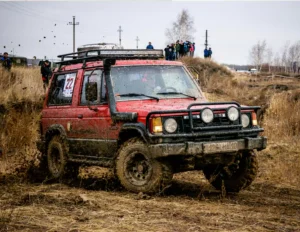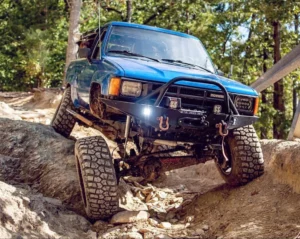
How Does a Rear Differential Work?
Power Transmission: The engine’s power is transferred through the transmission to the driveshaft. The driveshaft delivers this power to the differential.
Gear Mechanism: Inside the differential, a pinion gear connected to the driveshaft engages with the ring gear. The ring gear is connected to a carrier, which houses the spider gears.
Spider Gears: The spider gears are connected to the axle shafts and rotate on a perpendicular axis to the ring gear. When the vehicle moves in a straight line, the spider gears do not rotate on their own axis but move along with the ring gear, ensuring equal power distribution to both wheels.
Differentiation in Turns: During a turn, the wheels need to rotate at different speeds. The spider gears come into play by allowing one wheel to rotate faster than the other. This differentiation helps maintain traction and prevents tire wear.



